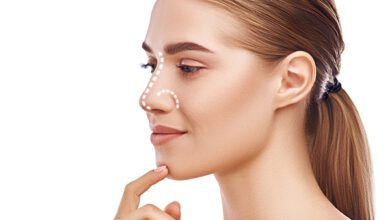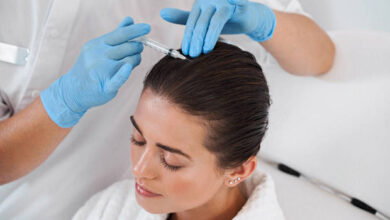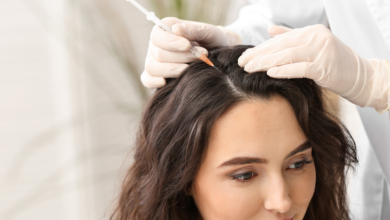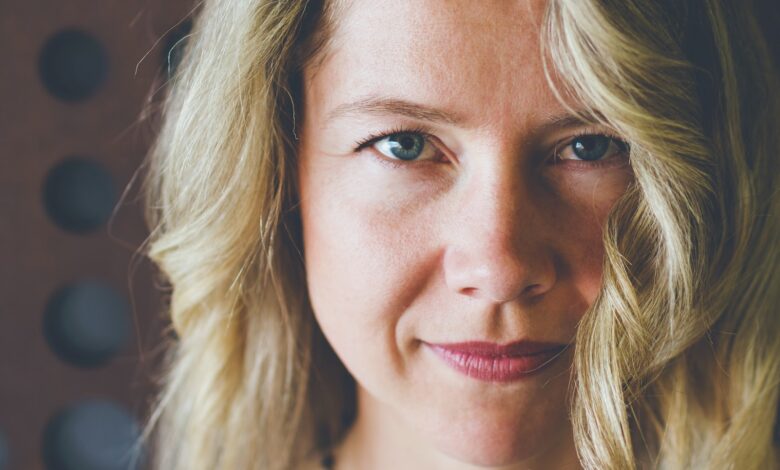
In the world of non-invasive anti-aging treatments, Ultherapy has emerged as a game-changer. This revolutionary procedure utilizes ultrasound technology to lift and tighten the skin, effectively reversing the signs of aging. By stimulating the production of collagen deep within the skin, Ultherapy offers a natural and long-lasting solution for individuals seeking a more youthful appearance. With its precise and targeted approach, Ultherapy is the answer to graceful aging, allowing you to regain your confidence and embrace the beauty of aging gracefully.

What is Ultherapy?
How does Ultherapy work?
Ultherapy is a non-invasive cosmetic procedure that utilizes ultrasound technology to lift and tighten the skin. It works by delivering focused ultrasound energy to the deep layers of the skin, specifically targeting the foundational layers that are typically addressed in surgical facelifts. The ultrasound energy stimulates collagen production, resulting in a gradual tightening and lifting of the skin over time.
What are the benefits of Ultherapy?
Ultherapy offers several benefits for those seeking a non-surgical alternative to traditional facelift procedures. Some key benefits include:
- Non-invasive: One of the primary advantages of Ultherapy is that it is a non-invasive procedure, meaning it does not require incisions or downtime. Patients can resume their normal activities immediately after treatment.
- Natural-looking results: The gradual tightening and lifting of the skin achieved through Ultherapy produce natural-looking results. The goal is to enhance one’s appearance while maintaining their unique features.
- Long-lasting effects: Ultherapy stimulates collagen production, which continues to improve the skin’s elasticity and firmness over time. The results can last up to a year or more, depending on individual factors such as age and genetics.
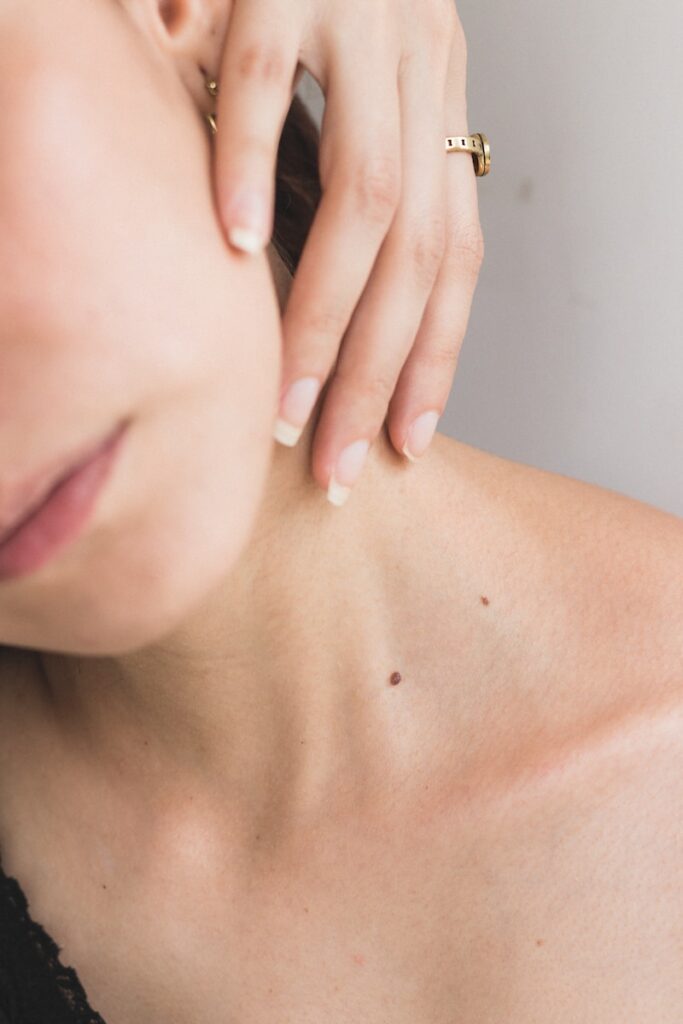
Who is a suitable candidate for Ultherapy?
Ultherapy is a suitable option for individuals who are experiencing mild to moderate sagging skin on the face, neck, and décolletage. It is especially beneficial for those looking to address jowls, drooping eyelids, or a loss of skin firmness.
While Ultherapy can be performed on individuals of all skin types, it is essential to have a consultation with a qualified provider to determine whether you are a suitable candidate. Factors such as medical history, skin condition, and expectations will be taken into account.
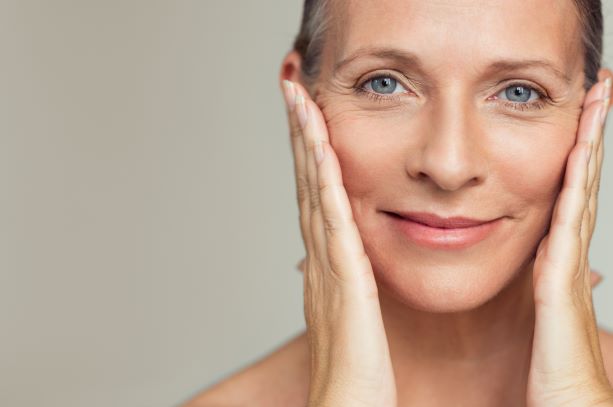
How long do the results of Ultherapy last?
The duration of Ultherapy results varies from person to person, as it depends on various factors such as age, lifestyle, and genetics. However, on average, the effects of Ultherapy can last up to a year or more. It is important to note that individual results may vary, and maintenance treatments may be recommended to optimize and prolong the results.
Are there any potential side effects of Ultherapy?
As with any cosmetic procedure, there are potential side effects associated with Ultherapy. However, these are typically mild and temporary. Some common side effects may include slight redness, swelling, tingling, or tenderness in the treated area. These side effects usually subside within a few hours or days following the procedure.
Serious complications or adverse reactions are rare when Ultherapy is performed by a qualified professional. It is crucial to choose a reputable clinic and ensure that the provider is certified and experienced in performing Ultherapy treatments.
The Ultherapy Procedure
Preparing for your Ultherapy treatment
Before undergoing Ultherapy, there are certain steps you can take to prepare for the procedure, ensuring optimal results and a smooth recovery. Your provider will provide specific instructions, but here are some general guidelines:
- Consultation: Schedule a consultation with a qualified Ultherapy provider to determine if you are a suitable candidate and to discuss your goals and expectations.
- Medications: Inform your provider about any medications you are taking, as they may recommend adjustments or temporary discontinuation of certain medications prior to the treatment.
- Skincare routine: It is advisable to avoid creams or lotions on the treatment area on the day of your procedure.
- Comfortable clothing: Wear loose and comfortable clothing to your appointment. This will ensure ease of access to the treated area and enhance post-treatment comfort.
What to expect during the Ultherapy procedure
During the Ultherapy procedure, you will be comfortably positioned in a treatment chair. The provider will cleanse the treatment area and apply an ultrasound gel to facilitate the delivery of ultrasound energy to the skin.
Using a handheld device, the provider will glide the ultrasound applicator over the targeted areas, delivering precise and controlled ultrasound energy. As the energy is delivered, you may experience mild sensations of warmth or tingling beneath the skin, indicating the collagen-building process is taking place.
The duration of the procedure can vary depending on the treatment area and individual needs. However, most Ultherapy sessions typically range from 30 to 90 minutes.
Post-treatment care and recovery
One of the advantages of Ultherapy is that there is little to no downtime associated with the procedure. You can typically resume your regular activities immediately following the treatment. However, it is essential to follow any specific post-treatment instructions provided by your provider to ensure optimal results and minimize the risk of potential side effects.
Common post-treatment care guidelines may include:
- Sun protection: Use sunscreen with a high SPF and avoid excessive sun exposure to protect the treated area.
- Avoid extreme temperatures: Avoid hot baths, saunas, or activities that may cause excessive sweating for a few days after the procedure.
- Gentle skincare routine: Avoid harsh skincare products or aggressive exfoliation in the treated area for a few days following the procedure.
- Moisturize: Keep the treated area hydrated by applying a gentle, non-irritating moisturizer as recommended by your provider.
How many Ultherapy sessions are needed for optimal results?
The number of Ultherapy sessions required for optimal results depends on various factors, including the degree of skin laxity and the desired outcome. While some individuals may achieve satisfactory results with a single session, others may benefit from multiple sessions spaced several months apart.
During your consultation, your provider will assess your unique needs and develop a personalized treatment plan that outlines the recommended number of sessions required to achieve your desired results.
Combining Ultherapy with other cosmetic procedures
Ultherapy can be combined with other cosmetic procedures to enhance and complement the overall rejuvenation effect. This combination approach allows for a more comprehensive and tailored treatment plan. Popular procedures that are often combined with Ultherapy include:
- Botox: Ultherapy can be used in conjunction with Botox to address both sagging skin and dynamic wrinkles, providing a more youthful and refreshed appearance.
- Dermal fillers: By combining Ultherapy with dermal fillers, targeted areas of volume loss can be replenished, further enhancing the lifting and rejuvenating effects.
- Chemical peels or laser treatments: These procedures can improve skin texture, tone, and pigmentation, and when combined with Ultherapy, can result in a more complete facial rejuvenation.
It is essential to consult with a qualified provider to determine the best combination approach based on your specific concerns and goals.
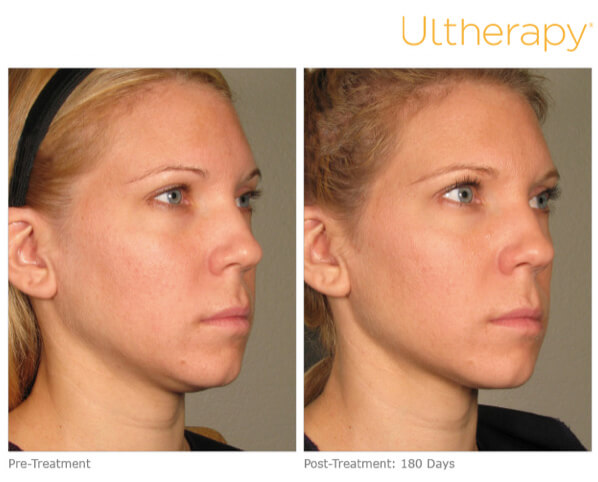
Ultherapy Vs. Other Anti-aging Treatments
How does Ultherapy compare to surgical facelifts?
Ultherapy offers an effective alternative to surgical facelifts for individuals who are seeking non-invasive options. While surgical facelifts provide immediate and dramatic results, they involve incisions, anesthesia, and a more extended recovery period. Ultherapy, on the other hand, provides gradual yet noticeable improvement and requires minimal downtime.
The decision between Ultherapy and a surgical facelift ultimately depends on individual factors such as desired results, tolerance for invasive procedures, and recovery time constraints.
Ultherapy vs. Botox: Which is a better option?
Ultherapy and Botox are both popular anti-aging treatments, but they target different concerns and work in different ways. Ultherapy primarily addresses sagging skin and skin laxity by stimulating collagen production, resulting in a lifting and tightening effect. Botox, on the other hand, targets dynamic wrinkles caused by repeated muscle movements, reducing their appearance by temporarily immobilizing the underlying muscles.
The choice between Ultherapy and Botox depends on the specific concerns and desired results. In some cases, these treatments can be used in combination to address both sagging skin and wrinkles.
Ultherapy vs. Laser treatments: Pros and cons
Ultherapy and laser treatments are both popular options for skin rejuvenation, but they differ in their mechanisms and targets.
Ultherapy utilizes ultrasound-based technology to stimulate collagen production and lift the skin from within, focusing on the deeper layers. Laser treatments, on the other hand, use concentrated light energy to target the outer layers of the skin, addressing concerns such as hyperpigmentation, fine lines, and texture irregularities.
The choice between Ultherapy and laser treatments depends on specific skin concerns and desired outcomes. In some cases, these treatments can be combined to achieve a more customized and comprehensive rejuvenation plan.
Ultherapy vs. Dermal fillers: Which is more effective?
Ultherapy and dermal fillers serve different purposes in the realm of anti-aging treatments. While Ultherapy primarily targets sagging skin and skin laxity, dermal fillers are designed to restore lost volume, smooth out wrinkles, and enhance facial contours.
The effectiveness of Ultherapy versus dermal fillers depends on the specific concern being addressed and the desired outcome. In some cases, these treatments can be used together to achieve a more complete and natural-looking result.
The cost comparison: Ultherapy vs. other anti-aging treatments
The cost of Ultherapy and other anti-aging treatments can vary depending on factors such as the geographical location, the extent of treatment required, and the provider’s expertise. While surgical facelifts tend to be more expensive due to the operative nature of the procedure, Ultherapy falls within a more moderate price range.
It is important to keep in mind that although Ultherapy may require multiple sessions to achieve optimal results, the longevity of its effects can offset the need for frequent maintenance treatments associated with other non-invasive options. Ultimately, the cost comparison should be considered alongside the potential benefits and longevity of the results.
Choosing a Qualified Ultherapy Provider
Researching and selecting a reputable clinic
When choosing a provider for your Ultherapy treatment, it is crucial to conduct thorough research and select a reputable clinic. Consider the following steps as part of your decision-making process:
- Look for certifications: Ensure that the clinic and provider are certified and licensed to perform Ultherapy treatments. Check if they are affiliated with reputable medical societies or organizations.
- Experience and expertise: Research the provider’s background and experience in performing Ultherapy. Look for reviews, testimonials, and before-and-after photos to assess their skill and results.
- Personal recommendations: Seek recommendations from trusted friends, family, or healthcare professionals who have undergone Ultherapy or other cosmetic procedures.
- Facility and equipment: Visit the clinic or treatment facility to assess cleanliness, professionalism, and the quality of the equipment used.
- Consultations: Schedule initial consultations with multiple providers to assess their knowledge, communication skills, and ability to address your concerns effectively.
Questions to ask during a consultation
During your consultation with a potential Ultherapy provider, it is important to ask relevant questions to gain a better understanding of the treatment and the provider’s expertise. Some questions you may consider asking include:
- How many Ultherapy treatments have you performed, and what is your success rate?
- Can you provide before-and-after photos of patients with similar concerns to mine?
- What are the potential risks or complications associated with Ultherapy, and how are they mitigated?
- What is the expected recovery time after the procedure, and when can I resume my regular activities?
- What is the cost of the procedure, and are there any financing options available?
Checking certifications and experience
Verifying a provider’s certifications and experience is essential to ensure you are receiving treatment from a qualified professional. Consider the following actions to check certifications and experience:
- Confirm certifications: Cross-reference the provider’s certifications with the relevant medical boards or societies.
- Check for a license to practice: Ensure the provider holds a valid license to perform Ultherapy or other cosmetic procedures.
- Inquire about experience and training: Ask the provider about their experience and training specifically related to Ultherapy, including the number of treatments they have performed and any specialized training they have received.
Reading patient reviews and testimonials
Reading patient reviews and testimonials is an effective way to gauge the satisfaction levels of previous Ultherapy patients. Look for reviews on reputable platforms, such as the provider’s website, social media pages, or independent review sites. Pay attention to both positive and negative reviews to gain a well-rounded understanding of other patients’ experiences.
The importance of a personalized treatment plan
A reputable Ultherapy provider will understand the importance of developing a personalized treatment plan that takes into account your unique concerns, goals, and medical history. During your consultation, the provider should thoroughly assess your skin, discuss your expectations, and create a tailored plan that outlines the recommended number of sessions, treatment areas, and anticipated results. A personalized treatment plan ensures that the procedure is customized to meet your specific needs and goals.
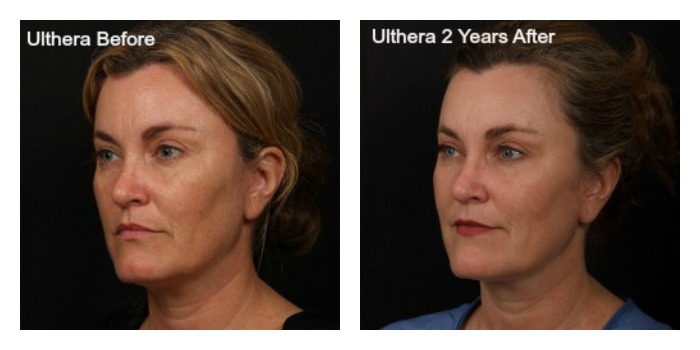
Real-life Ultherapy Experiences
Testimonials from satisfied Ultherapy patients
Listening to the experiences of other individuals who have undergone Ultherapy can provide valuable insight into the treatment. Many clinics and providers share testimonials from satisfied patients on their websites or through social media platforms. Reading or watching testimonials can offer firsthand accounts of the procedure, results, and overall patient satisfaction.
Before and after photos: Results of Ultherapy
Before and after photos of Ultherapy patients can help you visualize potential results and assess the efficacy of the treatment. Reputable providers often showcase these photos to demonstrate the effectiveness of the procedure. When evaluating before and after photos, pay attention to individuals with similar concerns to yours, as this can give you a better idea of what to expect in terms of outcomes.
Common concerns and misconceptions about Ultherapy
As with any cosmetic procedure, there may be common concerns and misconceptions surrounding Ultherapy. It is important to address these concerns to make an informed decision. Some common concerns or misconceptions include:
- Pain or discomfort during the procedure: While some individuals may experience mild sensations during Ultherapy, it is generally well-tolerated. Providers can offer measures to alleviate discomfort, such as topical anesthesia or pain medication if necessary.
- Effectiveness on severe skin laxity: Ultherapy is generally recommended for mild to moderate skin laxity. In cases of severe skin laxity, surgical options such as facelifts may be more appropriate.
- Immediate results: Unlike surgical facelifts, the results of Ultherapy are gradual and may take several months to fully develop. Patience is key when undergoing Ultherapy.
- Side effects or complications: While side effects are typically mild and temporary, some individuals may experience minimal redness, swelling, or tenderness. However, these should resolve within a few hours or days post-treatment.
Advice for first-time Ultherapy patients
If you are considering Ultherapy for the first time, there are some important factors to consider. Here is some advice to help you navigate the process:
- Research and consultation: Take the time to research various providers and schedule consultations to find a qualified and reputable professional who understands your goals and concerns.
- Set realistic expectations: Understand that Ultherapy produces gradual results and that individual outcomes can vary. Setting realistic expectations will help ensure satisfaction with the treatment.
- Follow pre and post-treatment instructions: Adhere to any pre and post-treatment instructions provided by your provider to maximize the effectiveness of the procedure and minimize the risk of complications.
- Communicate openly with your provider: Share any concerns, questions, or medical history with your provider during the consultation and throughout the treatment process. Open communication is vital for optimizing your experience and results.
- Prioritize aftercare: Follow the recommended aftercare instructions, including skincare routines, sun protection, and any post-treatment follow-up appointments.
Ultherapy success stories and celebrity endorsements
Ultherapy has garnered positive testimonials and endorsements from both satisfied patients and celebrities alike. Many individuals have shared success stories detailing their positive experiences with Ultherapy, emphasizing the natural-looking results and the confidence boost it has provided. Additionally, celebrities who publicly endorse Ultherapy contribute to its growing popularity and serve as testament to its effectiveness.
Frequently Asked Questions (FAQs)
How much does Ultherapy cost?
The cost of Ultherapy can vary depending on factors such as the treatment area, the provider’s expertise, and the geographical location. On average, a single session of Ultherapy can range from $1,500 to $5,000. It is important to consult with a provider to get an accurate cost estimate based on your individual needs.
Is Ultherapy painful?
While some individuals may experience mild discomfort during the Ultherapy procedure, it is generally well-tolerated. Providers can offer measures to alleviate any discomfort, such as topical anesthesia or pain medication if necessary.
What areas of the body can be treated with Ultherapy?
Ultherapy is commonly used to address skin laxity and sagging on the face, neck, brows, décolletage, and under the chin. These are common areas of concern for many individuals experiencing signs of aging.
Can Ultherapy be used as a preventative measure?
Although Ultherapy is commonly used to address mild to moderate skin laxity and sagging, some individuals may choose to undergo Ultherapy as a preventive measure. By stimulating collagen production and enhancing the skin’s elasticity, Ultherapy can help delay the signs of aging and maintain a more youthful appearance.
How soon can I see results after Ultherapy?
While individual results may vary, many patients begin to notice gradual improvements in the treated area within a few weeks of their Ultherapy session. The full effect of the treatment typically takes several months to develop as collagen production continues to improve the skin’s firmness and elasticity. Patience is key when undergoing Ultherapy, as the results are gradual but long-lasting.
In conclusion, Ultherapy offers a non-invasive, effective, and natural-looking alternative for individuals looking to address skin laxity and sagging without undergoing surgical procedures. By utilizing ultrasound technology, Ultherapy stimulates collagen production, resulting in a lifting and tightening effect. It is important to consult with a qualified provider, follow pre and post-treatment care instructions, and set realistic expectations to achieve optimal results. With its minimal downtime, long-lasting effects, and the ability to combine it with other cosmetic procedures, Ultherapy has become a popular choice in the world of anti-aging treatments.

